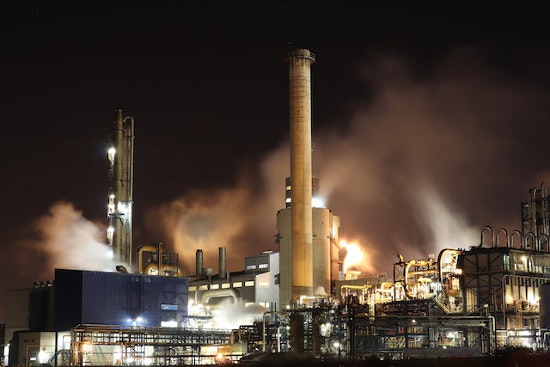Handling hazardous chemicals in the manufacturing process poses a range of safety risks. Protecting workers, the environment, and surrounding communities are paramount when handling hazardous materials. From start to finish, manufacturers must ensure the safe management and disposal of all chemicals used in production. Fortunately, various methods are available to ensure the safe storage, handling, and disposal of hazardous chemicals throughout the manufacturing process.


Process, Safety & Consulting Services
To safely handle hazardous chemicals, manufacturers must thoroughly assess any potential risks associated with their use. By conducting a risk assessment, manufacturers can develop processes to prevent exposure and any potential health or safety issues that may arise. These assessments should also review emergency response procedures for any accidents that do occur. This includes designating emergency response teams and having an effective training program for new and established employees. Additionally, many organizations rely on process safety consulting services to help develop an effective risk assessment program.
Protective Equipment
The implementation of protective equipment is essential to prevent workers from meeting hazardous chemicals or harmful fumes. Properly fitting protective clothing such as goggles, gloves, and respirators should be provided with additional safety training, so employees understand how to use their equipment correctly. Manufacturers should also establish regular maintenance programs for all protective equipment to ensure it remains in good condition and is fit for purpose.
Professional Assistance
Some manufacturers may seek professional assistance when managing hazardous materials due to their dangerous nature and the potential risks of mishandling them. Safety Consulting services provide comprehensive support for managing hazardous chemicals, including creating custom safety plans tailored to a manufacturer’s needs and regular on-site inspections to verify compliance with established regulations for safe chemical handling practices.
Chemical Labeling & Storage
Once manufacturers have conducted their risk assessment, they must ensure that all containers with hazardous materials are properly labeled with clear and concise warnings. All storage areas must be designated and well-ventilated to reduce the risk of exposure and accidental contact. Manufacturers should also take extra care to store flammable materials away from ignition sources and other volatile substances. Additionally, they should gauge temperature levels within storage rooms and invest in appropriate temperature control systems if necessary.
Transferring & Mixing Chemicals
When transferring or mixing hazardous materials, manufacturers must take extra care to ensure that no dangerous fumes become airborne or accidentally escape from the transfer process. When using hoses or pumps to transfer hazardous liquids, careful supervision should be taken as well as a properly fitted hose safety clamp that prevents accidental leakage or dripping which can lead to contamination of the environment or harm to workers.
Leak Detection Devices
Leak detection devices are essential to reducing the risk of exposure due to chemical leaks during manufacturing. These devices can be wired or wireless depending on the needs of each facility and are designed to detect very small leaks before they become dangerous enough to pose a threat to employees or nearby communities. Leak detection devices can also alert personnel when leaking tanks need to be shut down or repaired for them to be safely reused again in future production runs without risking further environmental contamination.
Disposal & Recycling
All hazardous chemicals used during the manufacturing process must be disposed of responsibly following local, state, and federal laws. Disposal methods are often regulated by different government agencies, such as U.S Environmental Protection Agency (EPA) which has specific requirements for waste disposal and labeling procedures. Additionally, many manufacturers have established environmental initiatives like recycling programs that reuse materials from existing products to reduce waste material going to landfill sites.
Spill Containment & Cleanup
Manufacturers must also take extra care when dealing with chemical spills, as these can quickly lead to contaminated environments and harm workers if not dealt with quickly enough. Spill containment is a key practice that helps minimize the impact of spills by containing damaged containers until they can be safely moved away from work areas and disposed of. Properly trained personnel should also conduct regular spill drills, which help identify potential hazards before they become an issue while also helping employees become familiar with the proper cleaning and disposal procedures if a spill does occur.
Emergency Response Plans
Manufacturers must have an effective emergency response plan should an accident occur involving hazardous materials. This plan should include detailed instructions on how to safely deal with any accidents, including communicating information to staff members and appropriate authorities about the incident, along with evacuation plans for staff members to prevent any potential harm from occurring. Regular training sessions based on this plan should also be undertaken to ensure everyone knows how to respond properly in an emergency.
Conclusion
Manufacturers must take extra precautions when handling hazardous chemicals during production to protect their workers and local environments from potential harm due to negligence or inadequate safety measures. By conducting thorough risk assessments, labeling chemicals correctly, providing protective equipment, disposing of waste responsibly, implementing emergency response plans, recording requirements, monitoring leaks, and seeking professional assistance when needed. Manufacturers can ensure that they adhere to best practices when handling potentially dangerous materials during their operations.






















